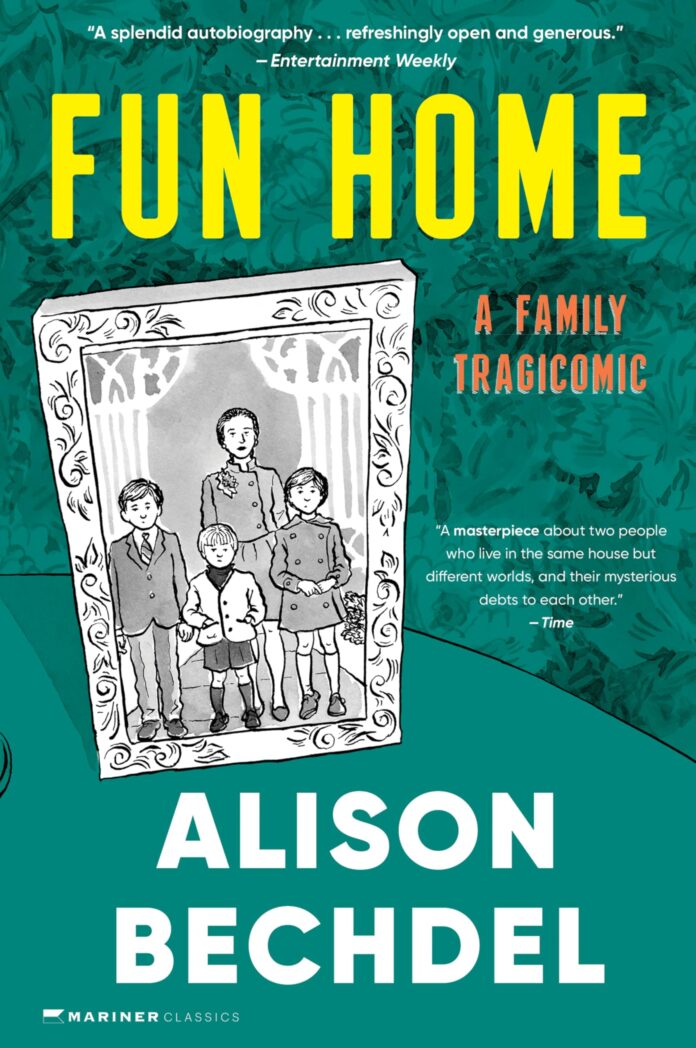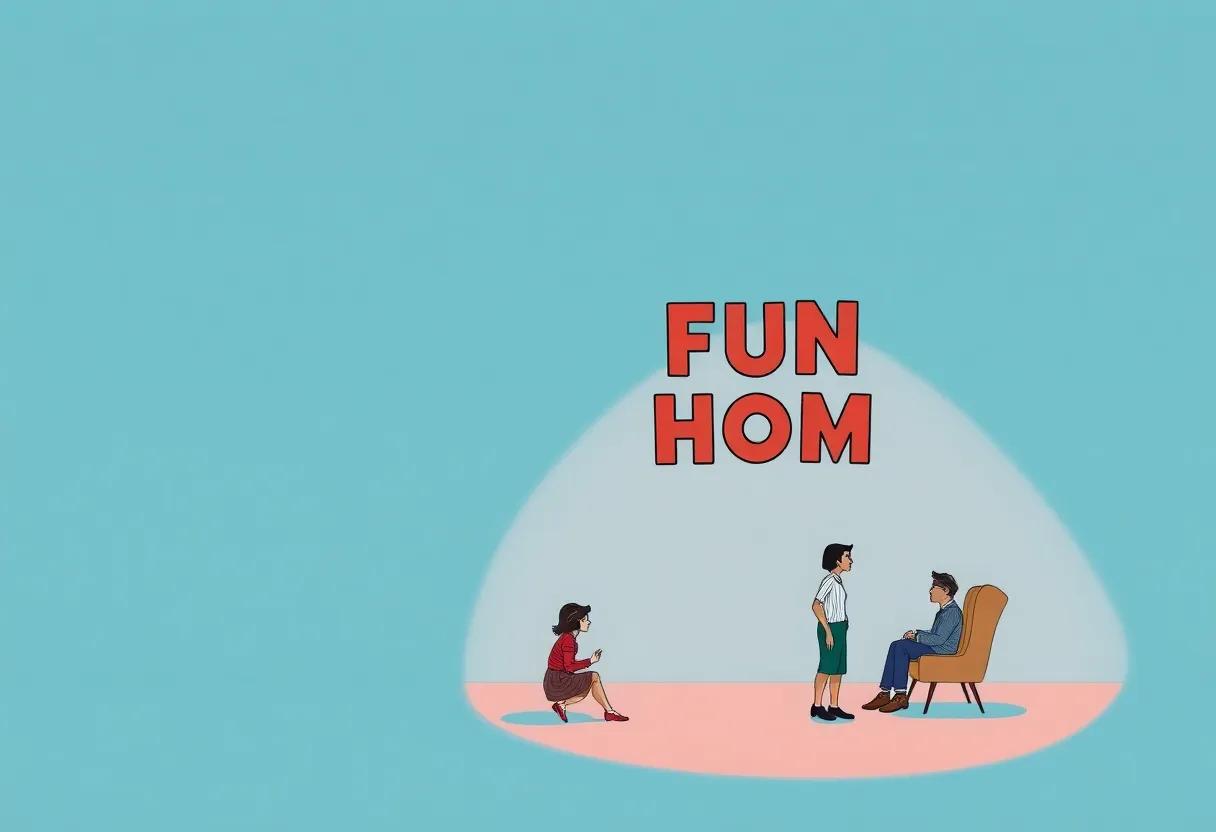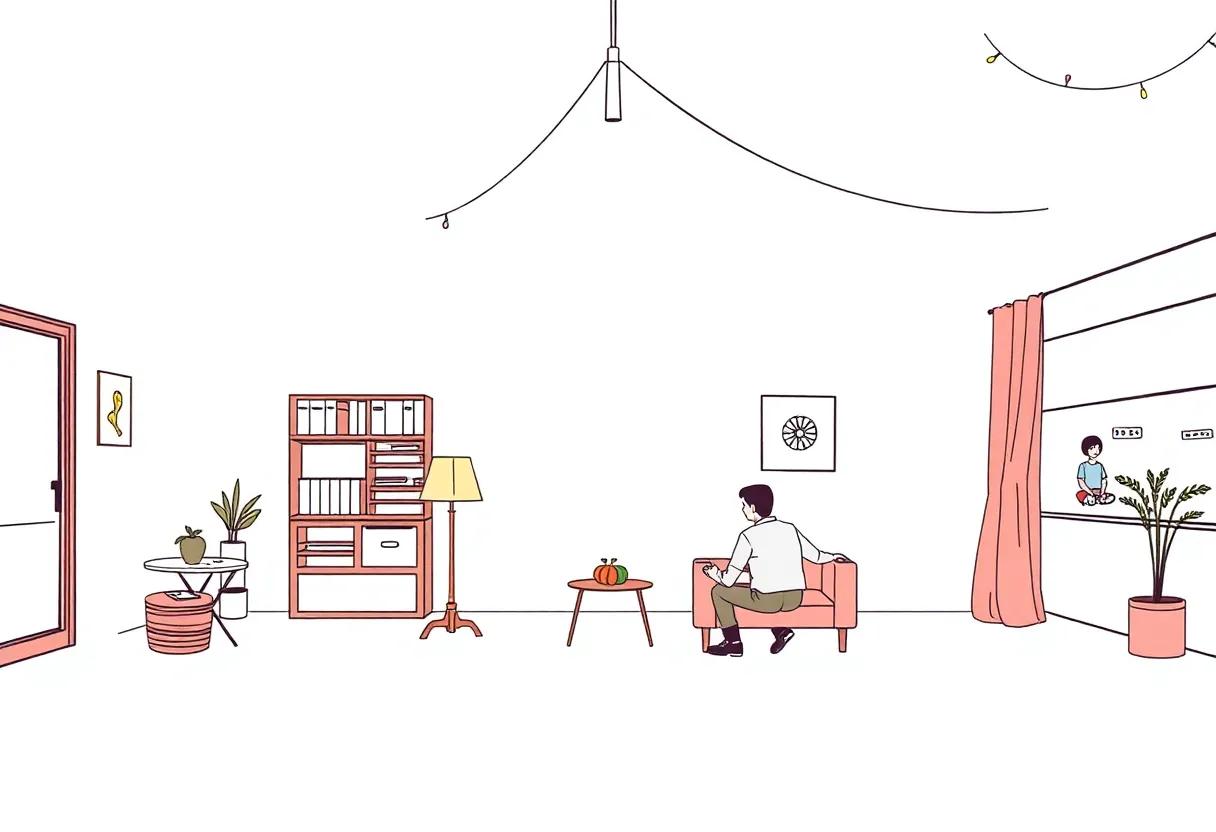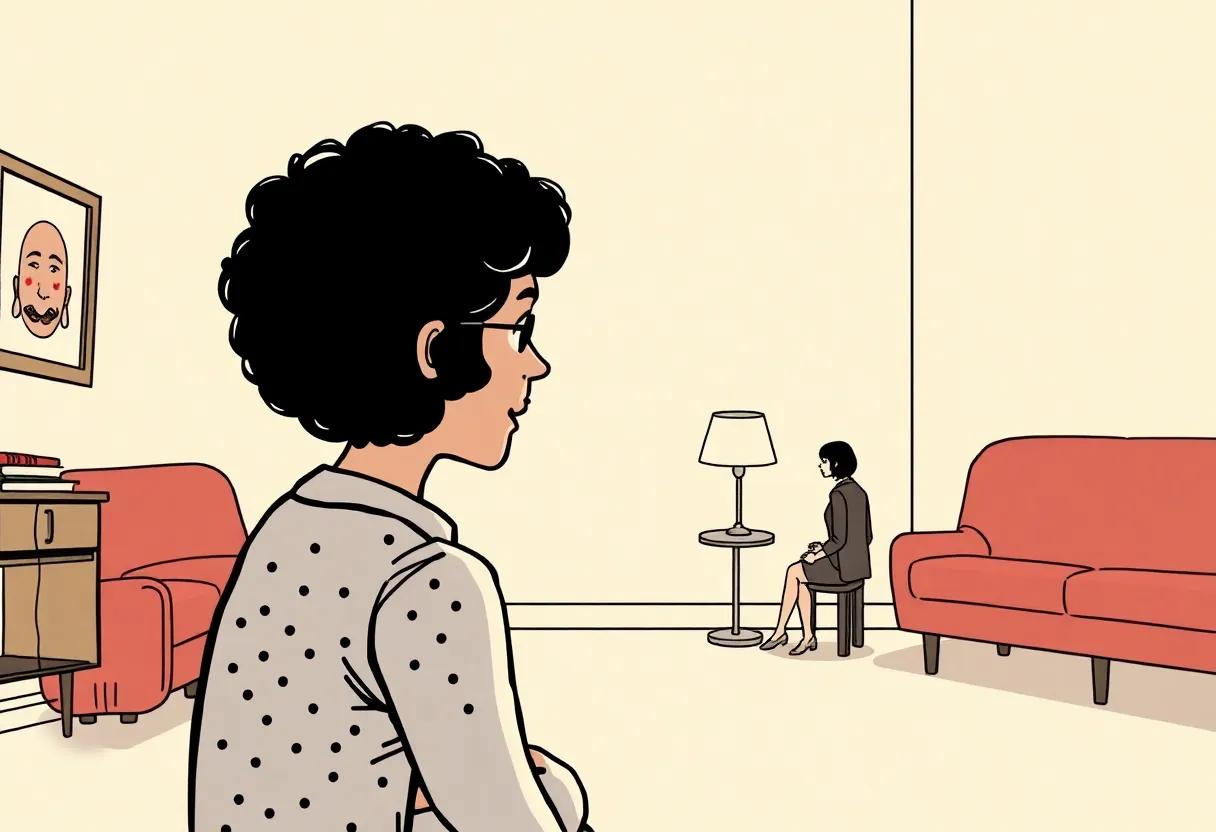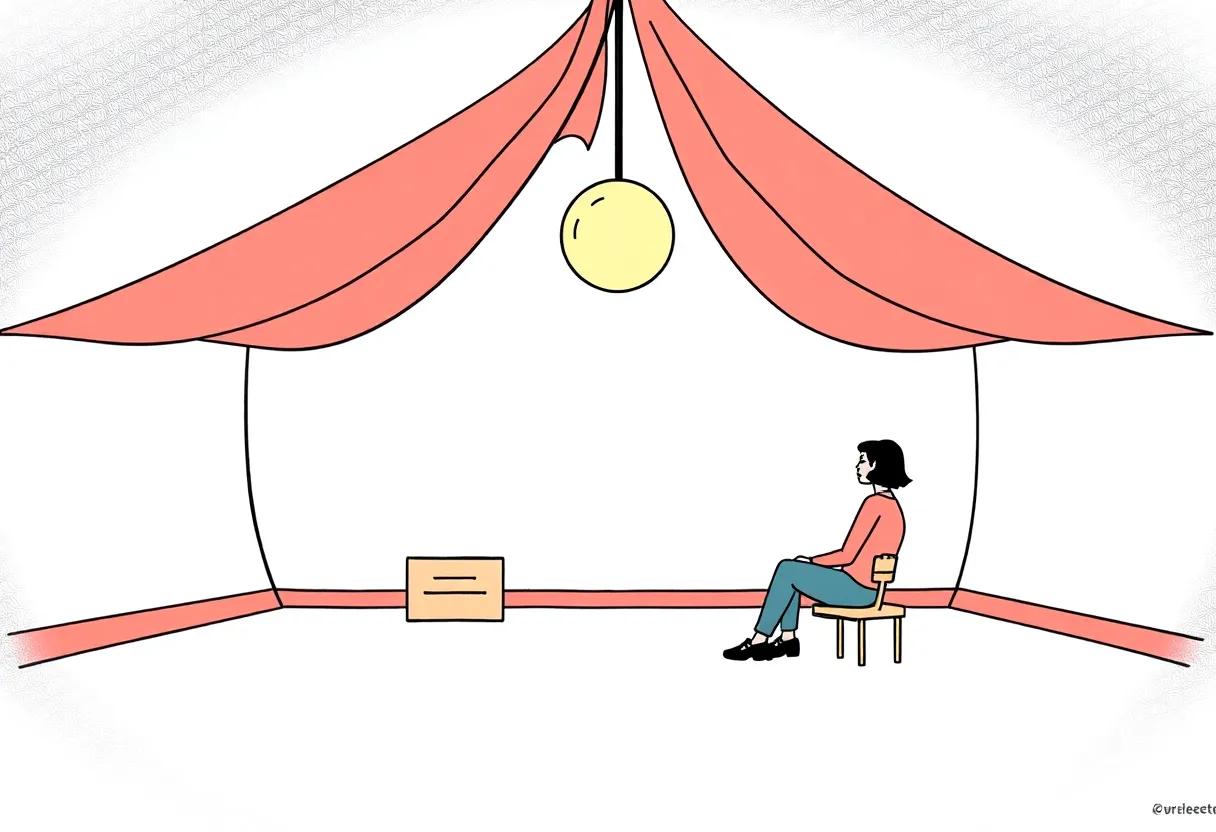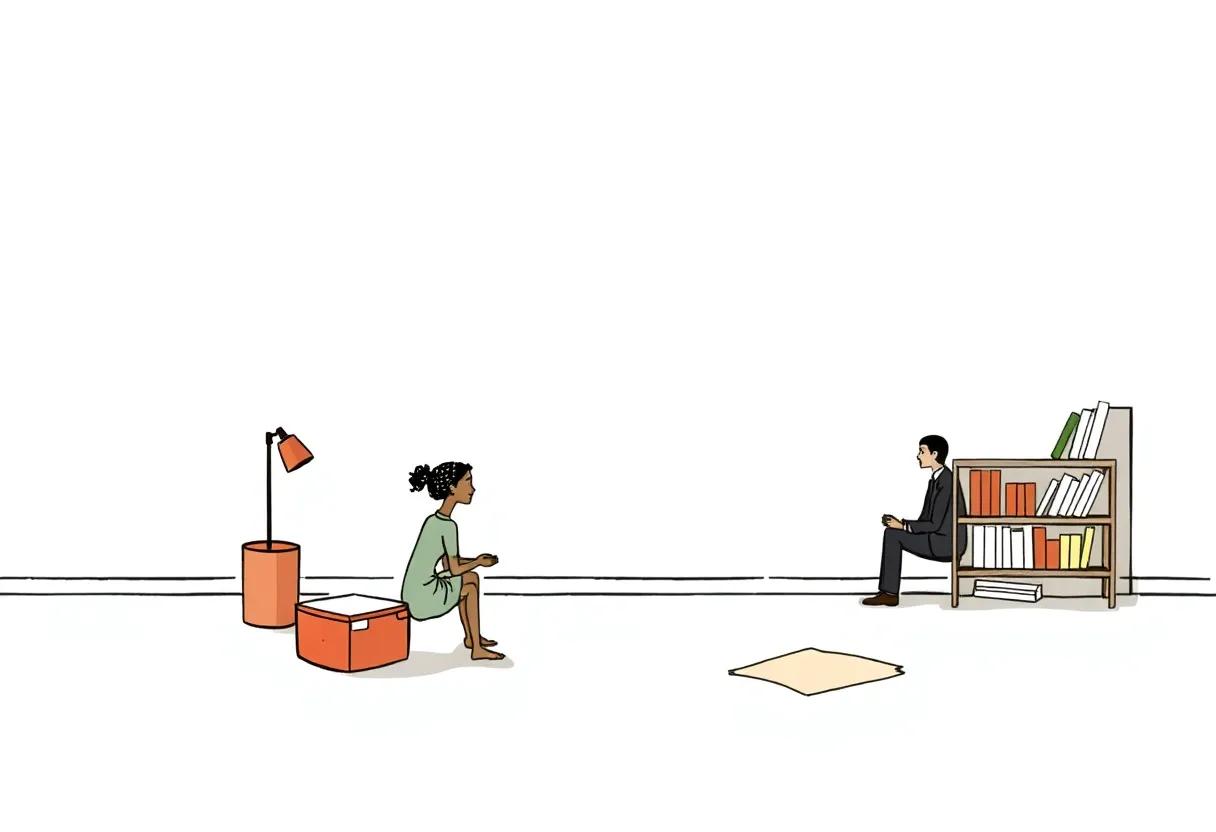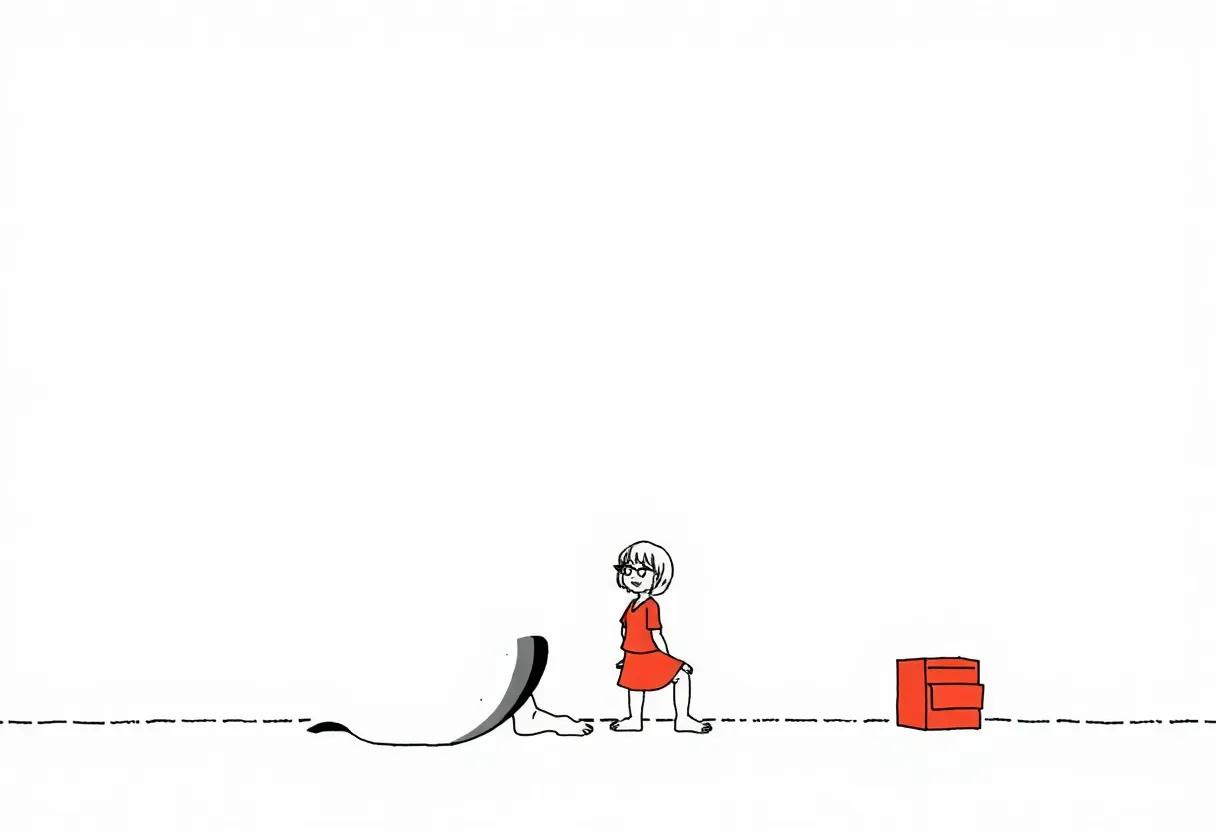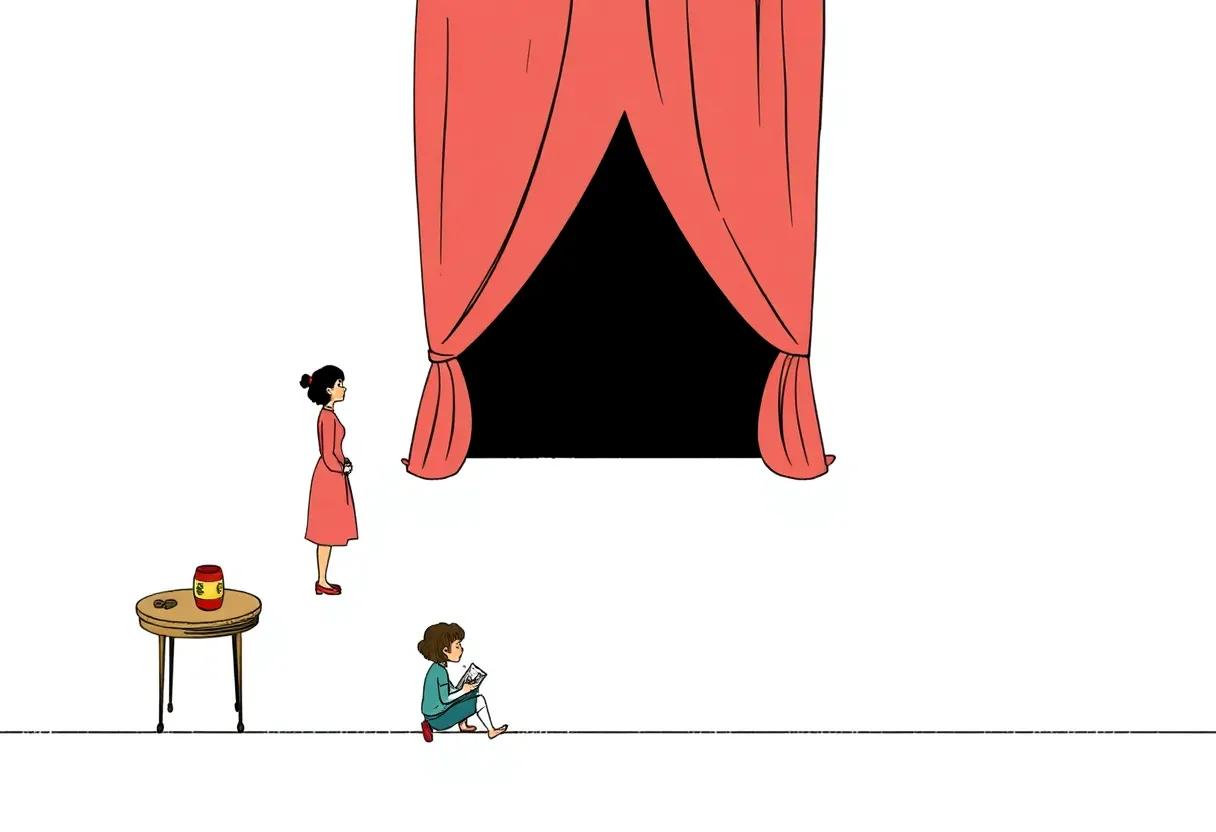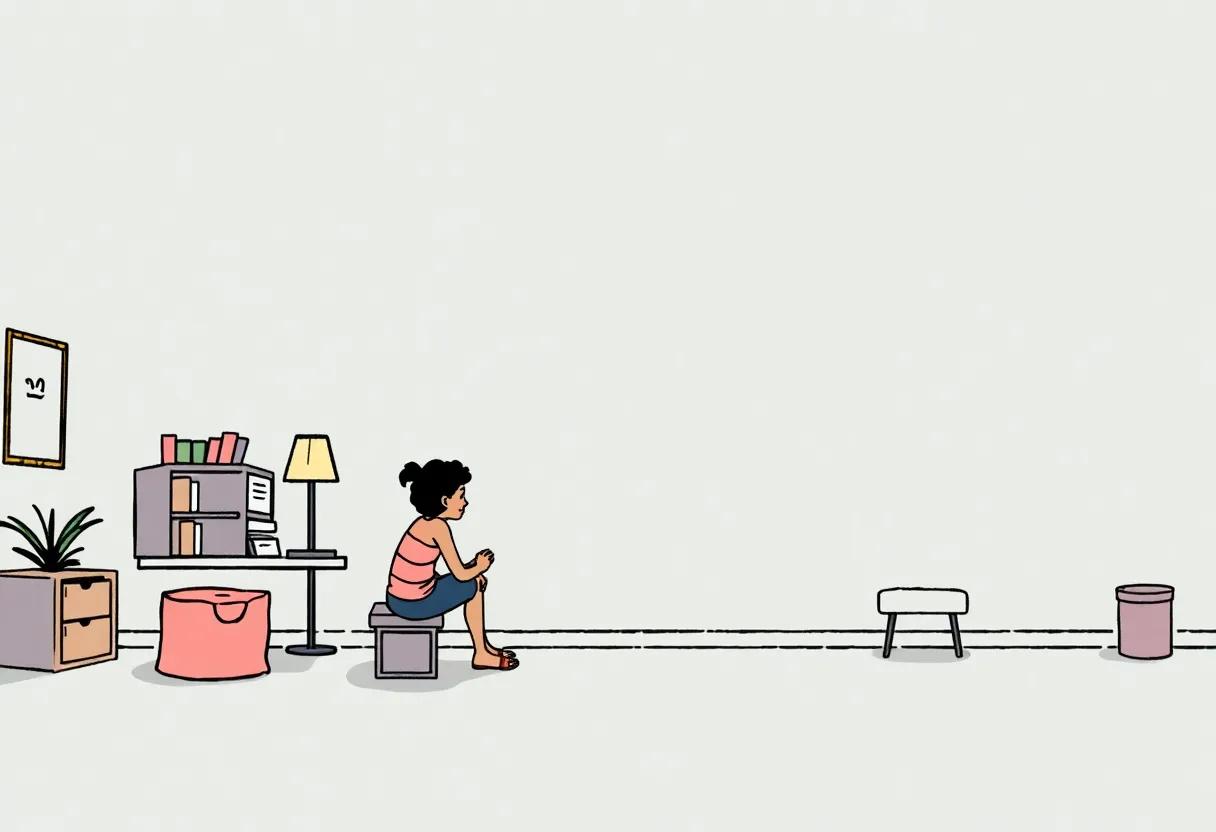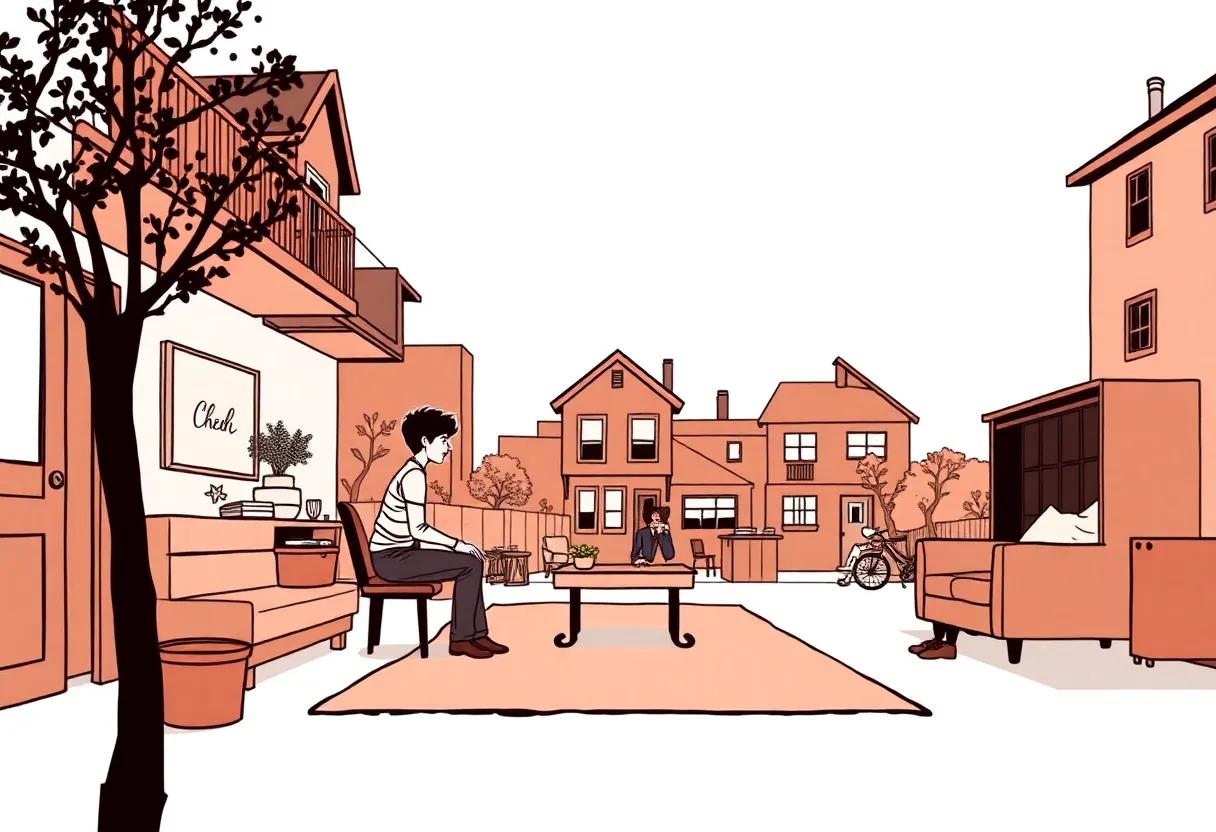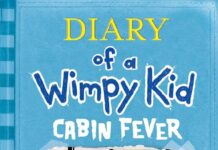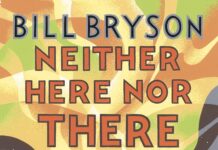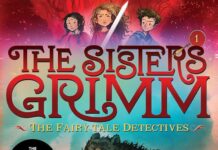In the labyrinthine corridors of memory and self-finding, Alison Bechdel’s graphic memoir, “Fun Home,” serves as both a mirror and a window through wich we glimpse the intricacies of identity and the haunting echoes of loss. With an artful blend of poignant narrative and striking illustrations, Bechdel invites readers into her world—a quaint funeral home that is as much a stage for her family’s secrets as it is a backdrop for her own coming-of-age journey.In this review, we will navigate the delicate themes woven throughout “Fun Home,” examining how the interplay of personal history, sexuality, and familial relationships shapes Bechdel’s exploration of both the complexity of identity and the resonant pain of loss.Through this lens, Bechdel’s work not only tells her story but also offers an invitation to reflect on our own truths and the legacies that define us.
Themes of Identity in Bechdel’s Narrative Journey Through ’Fun Home
In Alison Bechdel’s graphic memoir, the exploration of identity unfolds intricately through personal narrative and the lens of familial relationships. The protagonist navigates her evolving self-awareness against the backdrop of her father’s complex personality and secrets. The juxtaposition of Bechdel’s coming of age with her father’s struggles not only highlights themes of sexual identity but also gender roles, showcasing how these intersect with the broader quest for self-understanding. As the narrative progresses, the tension between public persona and private truth emerges, compelling readers to reflect on their own identities and the masks they wear in various aspects of life.
moreover, Bechdel’s narrative delves deeply into the impact of loss—the loss of her father, who was both an influence and a source of conflict, sends ripples through her understanding of identity. This pivotal event allows for a poignant exploration of how grief intertwines with self-discovery. The memoir portrays identity as not a singular, static construct but rather an evolving relationship shaped by experiences and relationships. In this context,loss becomes a catalyst for transformation,prompting a re-evaluation of personal history and meaning. As Bechdel revisits memories and reflects on her upbringing in the ’fun home,’ she fosters a dialog on identity that resonates beyond the page.
The Art of Graphic Memoir: A visual Exploration of Bechdel’s Storytelling
In ‘Fun Home,’ Bechdel employs a unique visual language that enhances her narrative. The use of color and composition becomes instrumental in conveying moods and memories. Certain panels come alive with vibrant hues, while others embrace monochromatic schemes, reflecting the emotional landscape of her life. The strategic arrangement of panels creates a rhythm, guiding readers through Bechdel’s exploration of her troubled relationship with her father and her quest for self-acceptance. Notably, the juxtaposition of childhood imagery against adult reflections fosters a profound dialogue between past and present, emphasizing the intertwining of loss and identity. This artful synthesis not only redefines the boundaries of memoir but also establishes Bechdel as a pioneering voice in visual storytelling.
Navigating the Complexity of Loss: Emotional Depth in ‘Fun Home
In “Fun Home,” Alison Bechdel intricately weaves together themes of identity and the profound weight of loss,transforming her personal narrative into a worldwide exploration of grief and self-discovery. The graphic memoir depicts Bechdel’s complex relationship with her father, a man whose life was marked by both brilliance and tragedy. Through vivid illustrations and reflective prose, she delves into her father’s struggles with his sexual identity, revealing how his untimely death sparked a deep internal journey for Bechdel herself. This exploration is rich in emotional nuance, portraying not only the sorrow of loss but also the invigorating, albeit painful, process of understanding oneself through the remnants of those who have passed away.
An essential aspect of Bechdel’s work lies in her ability to portray the intricacies of family dynamics, where love and pain coexist. The following points encapsulate this emotional landscape:
- Intergenerational Reflection: Bechdel’s relationship with her father prompts introspection about her own identity.
- Art as Catharsis: The act of creating “Fun Home” serves as a therapeutic exploration of grief.
- Complex Emotions: The narrative captures conflicting feelings of admiration and resentment toward her father.
- Past Context: The memoir intertwines personal history with broader societal issues regarding sexuality and acceptance.
| Theme | Depiction |
|---|---|
| Identity | Search for self amidst familial expectations |
| Loss | Grief as a pathway to understanding |
| Legacy | Unpacking a parent’s influence on personal growth |
| Art | Illustration as a medium for emotional expression |
Family dynamics and Secrets: Unpacking Bechdel’s Relationships
Alison Bechdel’s exploration of her family’s intricate dynamics in Fun Home unveils layers of relationships fraught with unspoken truths and emotional complexities.Central to this narrative is her relationship with her father, Bruce, whose dual life as a closeted gay man and a meticulous funeral home director casts a long shadow over the family’s interactions. This sense of secrecy creates an environment where identity is often negotiated in silence, leading to a poignant disconnect between bechdel and her father. The struggle for understanding and acceptance plays out vividly through poignant flashbacks and frank revelations, illustrating how familial bonds can concurrently nurture and stifle personal authenticity.
Throughout the memoir, Bechdel juxtaposes her own coming-of-age journey with her father’s tragic story, highlighting how deeply entrenched roles and expectations shape their identities. The tension between closeness and estrangement resonates through various family interactions,especially in the following aspects:
- Interaction: Many conversations laden with subtext reveal true feelings frequently enough left unexpressed.
- Shame and Guilt: Both characters struggle with internalized sentiments that influence their choices and actions.
- Artistic Influence: Bechdel often references literature and art, suggesting a shared medium for connection and introspection.
this complex interplay is further illustrated in the following table, summarizing key moments that define Bechdel’s relationships with her family:
| Moment | Impact on Bechdel |
|---|---|
| Discovery of Father’s Sexuality | Shifts her understanding of love and identity |
| Confrontation about Family Secrets | Fosters a sense of betrayal and longing for truth |
| Shared Artistic Experiences | Creates a bridge to understanding, despite distance |
Ultimately, Bechdel’s poignant recounting of family secrets serves as a mirror reflecting her search for identity against a backdrop of profound loss. Each relationship shaped by silence, love, and unmet expectations invites readers to consider how their own family interactions mold their perceptions of self. This delicate balance of intimacy and alienation transforms the narrative into a universal exploration of what it means to belong.
The Role of Literature and Art in Self-Discovery
In Alison Bechdel’s ”Fun Home,” literature and art serve as critical conduits for self-exploration,allowing both the creator and the observer to navigate the intricate landscapes of identity and loss. The vivid illustrations and poignant storytelling breathe life into the complexities of Bechdel’s relationship with her father, a man whose own unfulfilled identity reverberates throughout the narrative. Through the lens of various literary and artistic references, including works by James Joyce and Marcel Proust, Bechdel illustrates how these mediums become tools for understanding personal and familial history. they encapsulate emotions that frequently enough elude verbal expression,revealing the struggles of reconciling one’s identity with the legacies of those who came before us.
Moreover,the interplay of the written word and visual art allows for a layered exploration of grief and acceptance. By constructing a space where memories can be examined and reinterpreted, Bechdel invites readers to reflect on their own journeys of self-discovery. Key themes emerge, such as the search for belonging, the influence of sexuality on identity, and the weight of societal expectations. This dialogue between past and present not only deepens our understanding of Bechdel’s experiences but also encourages us to engage in our own narratives of identity formation. The work stands as a testament to the power of literature and art as essential reflections of the human experience,serving both personal catharsis and broader cultural commentary.
Cultural References and Their Impact on Identity in Bechdel’s Work
In Alison Bechdel’s “Fun Home,” cultural references weave a rich tapestry that contributes to her exploration of identity, especially in relation to her father and her own sexuality. These references serve as pivotal touchpoints that illuminate the complexities of Bechdel’s upbringing, simultaneously steeping her narrative in the literary and artistic traditions that shaped her worldview. For instance, Bechdel’s allusions to various literary figures and works—such as Marcel Proust and the myths of the Greeks—not only highlight her father’s influence as a literature professor but also signal her journey of self-discovery in a world where cultural artifacts can either constrain or liberate personal identity.
Moreover, the interplay of visual art and literature in ”Fun Home” enhances readers’ understanding of how cultural narratives intersect with personal experience. bechdel’s nuanced representation of her family’s dynamics juxtaposed with the cultural markers of their time raises questions about the legacies we inherit. By referencing well-known literary and artistic traditions, she positions herself and her father within a broader context of queer identity and familial shame. This dialogue serves to reflect on how cultural expectations shape individual identities,fostering a contemplative space for readers to consider their own relationships with such narratives.
The Intersection of Queer Identity and Familial Ties in ‘Fun Home
In Alison Bechdel’s poignant memoir, the complexities of queer identity unfold in tandem with the intricate dynamics of familial relationships. Through her graphic narrative, Bechdel artfully depicts her own journey of self-discovery alongside her attempts to understand her father’s hidden life. This intersection is marked by a series of memorable moments that illuminate how familial acceptance—or the lack thereof—shapes personal identity. At the heart of the story lies a profound exploration of love, secrecy, and the longing for connection, as Bechdel grapples with her father’s dual existence, revealing how familial ties can both bind and constrict.
As readers traverse the pages of ‘Fun Home’,they encounter a nuanced portrayal of how queerness can emerge amidst the shadow of expectations and tradition. Bechdel’s reflections capture the struggle of reconciling her burgeoning identity with her father’s repressed sexuality, leading to a heart-wrenching realization of shared experiences and unspoken truths. The memoir invites an examination of critical themes, such as:
- Generational Trauma: How the past influences the present identities.
- Acceptance: The desire for familial recognition and support.
- Loss: The emotional impact of coming to terms with a parent’s hidden struggles.
To encapsulate the dual narrative of identity and grief, the following table highlights key moments in Bechdel’s story that underscore these themes:
| Moment | Significance |
|---|---|
| Discovering her father’s sexuality | Initiates her own journey of self-acceptance. |
| Father’s suicide | Brings unresolved feelings of loss and identity crisis. |
| Shared love for literature | Establishes a connection amidst conflicting identities. |
Narrative Structure and Its Effect on Reader Engagement
Alison Bechdel’s graphic memoir deftly employs a non-linear narrative structure that mirrors the complexities of memory and identity. By juxtaposing various timelines,the story invites readers to piece together a portrait of Bechdel’s life alongside her father’s,emphasizing the tension between personal and familial narratives. This approach enhances reader engagement by creating a palpable sense of discovery—each page turn reveals new layers of meaning and emotional depth. As the narrative oscillates between past and present, readers are encouraged to actively interpret events, drawing connections that resonate with their own experiences of loss and identity.
Moreover,the interspersing of textual elements with visual storytelling enriches the reader’s journey. Bechdel utilizes artistic techniques to emphasize pivotal moments, fostering an immersive experience that engages both the mind and the senses. Elements such as a fragmented visual style and evocative imagery punctuate her exploration of tough themes, allowing readers to feel the weight of both joy and sorrow. This innovative storytelling technique not only captivates but also transforms the memoir into a participatory reflection, prompting readers to engage with their own identities considering Bechdel’s revelations.
Bechdel’s Use of Humor as a Coping mechanism in Tragic Moments
In the intricate tapestry of “Fun Home,” alison Bechdel weaves humor into the narrative as a survival tool, especially during moments steeped in grief. The ironic wit and sardonic observations serve not only to lighten the heavy themes of death and identity but also to establish a sense of connection amidst pain. Bechdel’s humor often manifests in her reflections on her father’s eccentricities, showcasing how laughter can emerge from the absurdities of life—even in the face of loss. This technique not only provides relief for the reader but also acts as a shield for Bechdel herself, allowing her to navigate the suffocating weight of her familial trauma with a sense of distance and clarity.
her comedic timing is particularly poignant when dealing with her father’s complex persona, allowing her to transform heavy moments into relatable anecdotes. these instances resonate profoundly with readers, revealing a shared human experience of discomfort wrapped in laughter. Notably, key elements of her humor include:
- Self-Deprecation: Acknowledging her own flaws and quirks, making her story approachable.
- Absurdity of Situations: Highlighting how sometimes life can be so bizarre that it becomes laughable.
- Irony: Using wit to underscore the contradictions in her feelings about her father and their relationship.
This approach to humor not only breathes life into painful memories but also provides readers with cathartic moments that reflect a shared understanding of grief and identity formation. By embracing humor amidst tragedy, Bechdel offers a roadmap showing that even from our darkest moments, laughter can serve as a powerful lifeline.
The Significance of Childhood Memories in Shaping Identity
Childhood memories serve as the foundational scaffolding upon which our identities are built, deeply influencing how we perceive ourselves and interact with the world around us. In *Fun Home*, Alison Bechdel intricately weaves her recollections into a narrative that reveals the complexity of her relationship with her father and the impact of their shared experiences. These memories are not merely nostalgic snippets of the past; rather, they’re vital threads that connect personal history to the broader themes of identity, sexuality, and acceptance. As Bechdel oscillates between recollection and reflection, she invites readers to consider how formative moments can shape not just individual identity but also familial dynamics.
Significant events from childhood often carry weight beyond their initial occurrence, anchoring emotional responses and guiding future decisions. In Bechdel’s work, the juxtaposition of vivid recollections with the pain of loss illustrates how identity can be both forged and fractured by early experiences. Compiling her memories unveils layers of understanding, allowing her to confront not only her father’s complexities but also her own. This duality of memory—both a sanctuary and a source of conflict—underscores how our past continues to influence our present and future selves. The memories that linger with us often highlight the intricate tapestry of our lives, revealing how echoes of childhood resonate in our quest for self-identity.
Symbolism and Imagery: Layers of Meaning in Bechdel’s Illustrations
In Alison Bechdel’s “Fun Home,” the interplay of symbolism and imagery serves as a profound mechanism for exploring complex themes of identity and loss. Throughout the graphic memoir, Bechdel employs objects and settings that resonate with emotional significance, transforming the mundane into the extraordinary. For instance,the family home,referred to as the “fun home,” symbolizes both comfort and pain,representing a façade of happiness that conceals deeper emotional turmoil. This duality is reflected in:
- The meticulous gardens maintained by her father, which mirror his obsession with control and beauty amidst chaos.
- The various artifacts throughout the house, each resonating with memories that challenge the reader’s understanding of familial love.
Moreover, Bechdel masterfully utilizes visual elements to accentuate her narrative, creating a rich tapestry of meaning that invites readers to delve deeper into her psyche. The juxtaposition of light and shadow in her illustrations embodies the struggle between acceptance and denial, illuminating the complexities of her relationship with her father. Additionally, recurring motifs of books and literary references serve not only as tools for personal reflection but also as an exploration of identity, revealing how literature has shaped both her understanding of herself and her family dynamics. The following table encapsulates key symbols and their meanings:
| Symbol | Meaning |
|---|---|
| Books | Knowledge and quest for identity |
| Garden | Control and façade of beauty |
| Art Supplies | Expression and understanding of self |
Lessons on Acceptance: How ‘Fun Home’ Resonates with Readers
Alison Bechdel’s Fun Home delves deep into the complexities of acceptance through the lens of familial relationships and personal identity. The narrative invites readers to reflect on their own experiences of embracing who they are amidst turmoil and loss. Through the fragmented yet poignant storytelling, Bechdel illustrates the struggle for understanding and acceptance, not only of oneself but also of those we love.The intimate portrayal of her father, a man whose own life was marred by hidden truths, serves as a powerful reminder of the duality of human experience—where love and pain coexist in a tangled web of relationships.
The resonance of these themes is further amplified through Bechdel’s artistic expression, which combines visual storytelling with raw, emotional introspection. Readers find themselves drawn into her reflective journey as she navigates her father’s complicated legacy and her own budding identity. Significant moments, such as the exploration of sexuality, parental expectation, and the clash of authenticity versus societal norms, render the narrative universally relatable. This prompts readers to consider their own journeys of acceptance and the indelible marks left by those we hold dear.Below is a summary of key themes that encapsulate the essence of acceptance in the graphic memoir:
| Theme | Description |
|---|---|
| self-Acceptance | Embracing one’s identity despite external pressures. |
| Parental Relationships | the complexities of love and pain between parent and child. |
| Loss | The lingering impact of grief on personal growth. |
| Identity Exploration | Navigating the spectrum of sexuality and gender. |
Critique of Bechdel’s Artistic Style and Its Role in Storytelling
Bechdel’s artistic style in ‘Fun Home’ is marked by a distinctive blend of minimalism and symbolism that serves to amplify the narrative’s deeper emotional resonances. Her use of ink and watercolor creates a visual palette that is both stark and lush, evoking the complexities of her childhood home and the intricate relationships within her family. Through the interplay of light and shadow, Bechdel captures the essence of memory—illuminating moments of joy but also casting long shadows of pain.This duality reflects the themes of identity and loss that permeate the graphic memoir, allowing readers to engage with her story on multiple levels. The absence of excessive detail invites interpretation,nudging the audience to fill in emotional gaps with their own experiences.
Furthermore, Bechdel skillfully employs panel transitions to enhance the storytelling flow, guiding readers through her nonlinear recollections with grace. each sequence is meticulously crafted to contribute to the overarching themes, making the rhythm of the comic as poignant as its content. For instance, in scenes depicting her father’s dual role as both a caring parent and an elusive figure, the sequential framing creates a palpable tension that mirrors Bechdel’s inner conflict. As a result, the visual narrative becomes as integral to the story as the text, offering insight into the labyrinth of familial love and the heartache of personal connection. This symbiotic relationship between art and story not only deepens the reader’s engagement but also elevates the memoir into a profound exploration of self-discovery.
Understanding the Autobiographical Elements: Alison Bechdel’s Personal Touch
In fun Home,Alison bechdel deftly weaves her personal experiences with broader themes of identity and loss,creating a tapestry that resonates deeply with readers.Her exploration of sexuality, familial relationships, and grief is imbued with her own memories, making every panel a window into her past. The dual narrative of her coming-of-age intertwined with her father’s complex identity offers a poignant reflection on how our lives are shaped by those we love and lose. The use of literary references and rich cultural contexts not only grounds her story but also amplifies the emotional weight of her journey.
Bechdel’s personal touch is evident through her meticulous attention to detail and the incorporation of significant moments that reflect her inner turmoil and external conflicts. For instance, she depicts her father’s life as a funeral home director, full of symbolism that parallels her exploration of mortality and acceptance. Here are some aspects that highlight her autobiographical approach:
- visual Imagery: Bechdel uses unique artistic styles to represent different phases of her life.
- Dialogue: Authentic conversations with family members illuminate her candid perspective on relationships.
- Literary Allusions: References to literary figures serve as touchstones that connect her personal narrative to broader themes.
This layering of personal experiences with universal themes creates a powerful narrative. It invites readers to not only witness her struggles but also to reflect on their own experiences with identity and loss. The impact of Bechdel’s autobiographical elements lies in their ability to resonate—reminding us that our stories, though intimate, are frequently enough shared by others navigating similar journeys.
Future Outlook
Alison Bechdel’s ”Fun home” stands as a poignant exploration of identity and loss, intricately weaving together themes of family, self-discovery, and the profound impact of grief. Through her distinctive blend of graphic artistry and introspective storytelling, Bechdel invites readers into the labyrinth of her past, allowing us to traverse the emotional landscapes of acceptance and understanding.This memoir not only challenges conventional narratives surrounding identity but also offers a mirror in which we can reflect on our own experiences of love and loss. As we turn the final page, we are left with a resonant sense of connection, a reminder that in our quests for understanding, we are never truly alone. “Fun Home” is not just a book; it is indeed a journey into the heart of what it means to navigate the complexities of our lives, making it an essential read for anyone seeking to embrace their own narrative amidst the tapestry of human experience.

